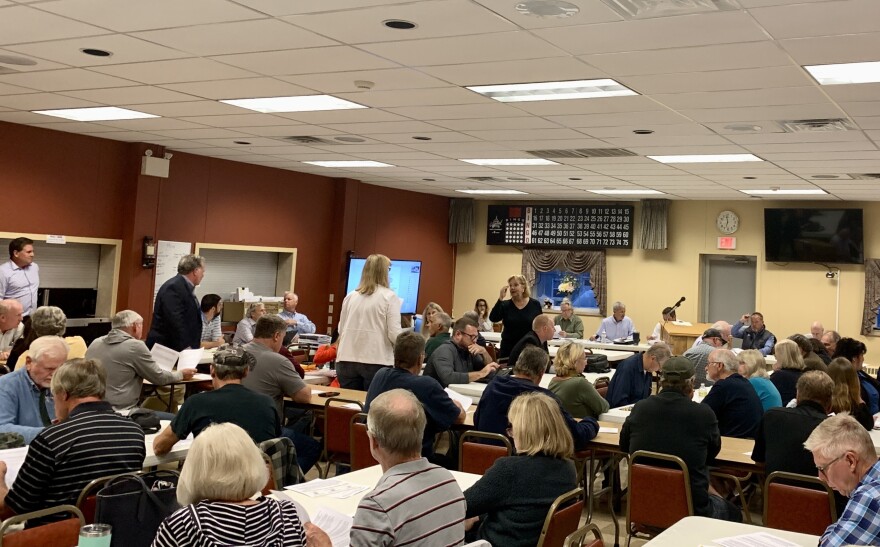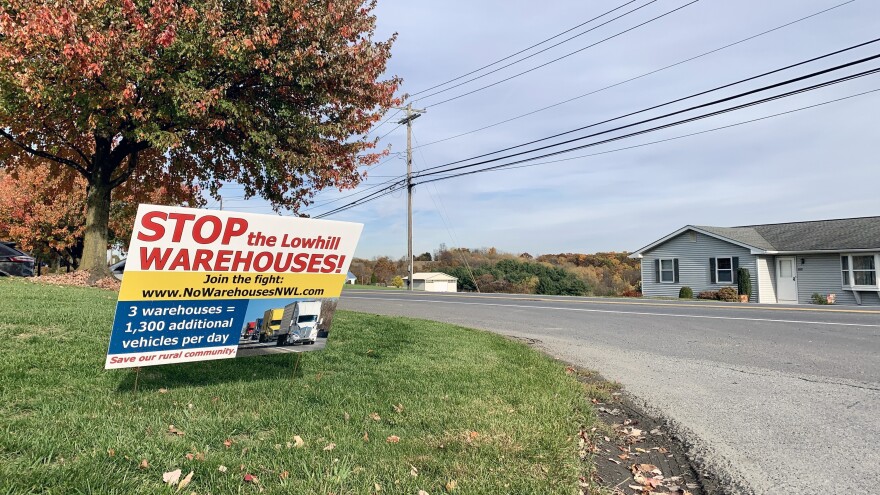BETHLEHEM, Pa. — Local land use, and the decisions that shape it, can be confusing, convoluted and frustrating for residents to understand.
So environmental advocates have created a guide to help.
PennFuture’s legal team on Monday released “Public Participation, Public Power: A Community Guide to Local Land Use Decision-Making in Pennsylvania."
The almost-100-page guide includes explanations of state and local land use laws, the local governing bodies that make land use decisions, how to find and participate in local public meetings and more.
"’Public Participation, Public Power’ gives Pennsylvanians, regardless of their background, the tools they need to effectively participate in local land use decision-making,” said Brigitte Meyer, PennFuture attorney and lead author.
“It provides comprehensive information about the different local entities that are responsible for making land use decisions, the types of decisions that they make, and the processes and legal requirements that govern those decisions."
This guidebook is a goldmine of definitions, information, tips and helpful hints to guide citizens, giving them a way to participate more effectively with local governmental entities.the Monocacy Creek Watershed Association
Environmental advocates and officials applauded the new guide, arguing it’s a much-needed tool to engage and empower residents across the commonwealth.
“This guidebook is a goldmine of definitions, information, tips and helpful hints to guide citizens, giving them a way to participate more effectively with local governmental entities,” Monocacy Creek Watershed Association said in a statement.
“You will learn the vocabulary of planning jargon and acronyms and which boards have what authority, putting more power in the peoples’ hands.
“The flowcharts give a detailed picture of how each step in the planning process works and show where the public can more fully be a part of the final decision.
"A must-have for all community groups who want to be more proactive and efficient in making public policy decisions regarding development proposals.”
Land use in the Lehigh Valley
Land use has been a point of contention across the region as development, both residential and commercial, continues to move into the region as populations swell.
Driven by $8.1 billion in manufacturing, the Valley's gross domestic product grew to a record $50.2 billion in 2022, according to the Lehigh Valley Economic Development Corp.
Now, the Lehigh Valley’s economy is larger than those of Vermont and Wyoming.
And it’s still growing. The region adds an average of 3,300 more people a year, or about 14.4%, according to the Lehigh Valley Planning Commission.
About 100,000 people are expected to be added to the region by 2050.
Along with that growth comes tension, especially as opinions differ on development and conservation.

This month, the U.S. Environmental Protection Agency will hold a public hearing after developers behind a planned 250,000-square-foot warehouse project off Route 22 sought permission to discharge stormwater from construction into the Monocacy Creek.
In March, a proposal for construction of a nearly 300,000-square-foot warehouse in Allen Township advanced to review by the LVPC.
‘More than passion’
The guidebook opens in the second-person point of view, addressing the reader directly.
“You are likely reading this guidebook because you have learned that your township, borough or city is making a decision about a proposed development or other land use issue, and you want your voice to be heard in the decision-making process,” the introduction says.
“Bravo! An informed and involved public is crucial to healthy communities.”
“This book is designed to give you that knowledge.”“Public Participation, Public Power: A Community Guide to Local Land Use Decision-Making in Pennsylvania."
But residents should avoid “simply shouting at the sky,” officials argue in the guide. Instead, residents should try to be effective and persuasive.
“This requires more than passion,” according to the guide. “It requires knowledge of the several types of local land use decisions, the decision-making bodies who make those decisions, the procedure for making them, and what goes into each decision.
“This book is designed to give you that knowledge.”
The guide took six months to complete, officials said, and includes input from more than 30 local municipal officials across the state.
The motivation for its creation came from residents — dozens have reached out to PennFuture for help understanding land use ordinances and participating in local land use processes.
Carolyn Lange, secretary of the Aquashicola Pohopoco Watershed Association, gave “kudos and praise” for the guidebook.
"It is beautifully written, very concise and informative,” Lange said.
“Whether you are already involved with local government or just starting out, it is the perfect resource and ‘how-to’ guide for helping citizens who want to make a positive impact in their communities."


